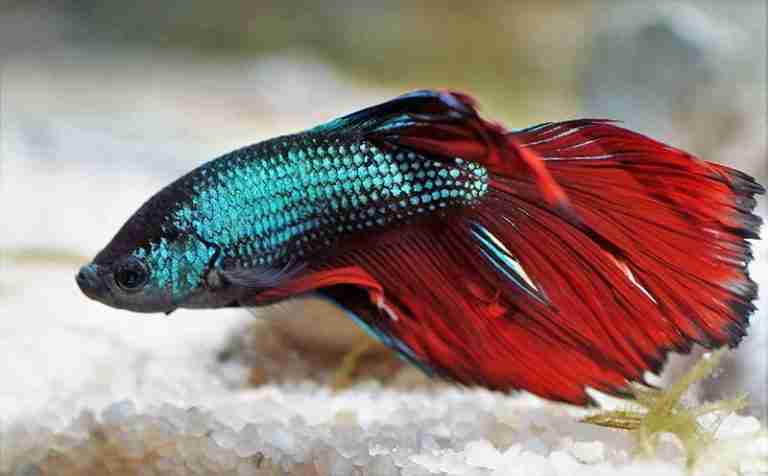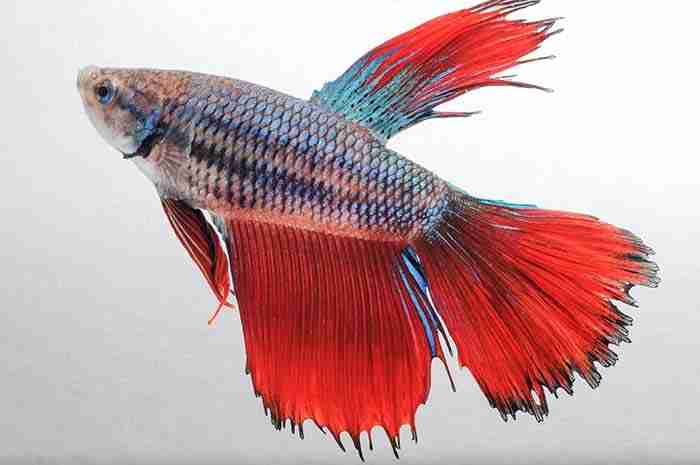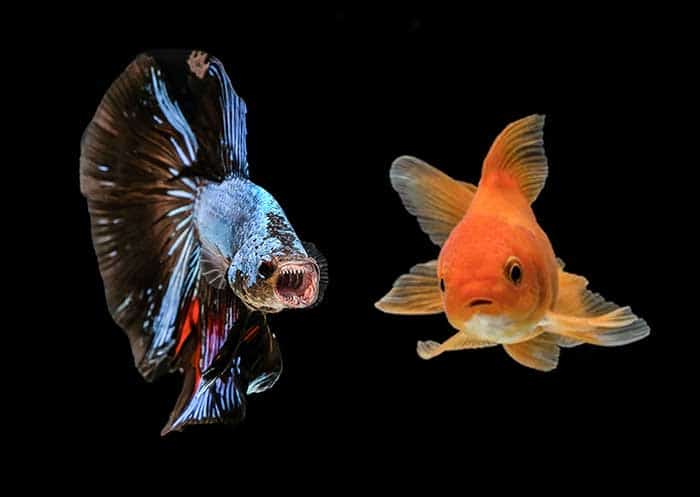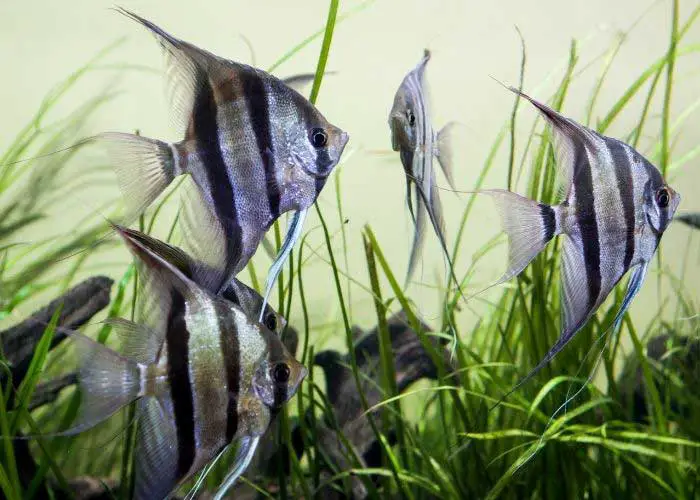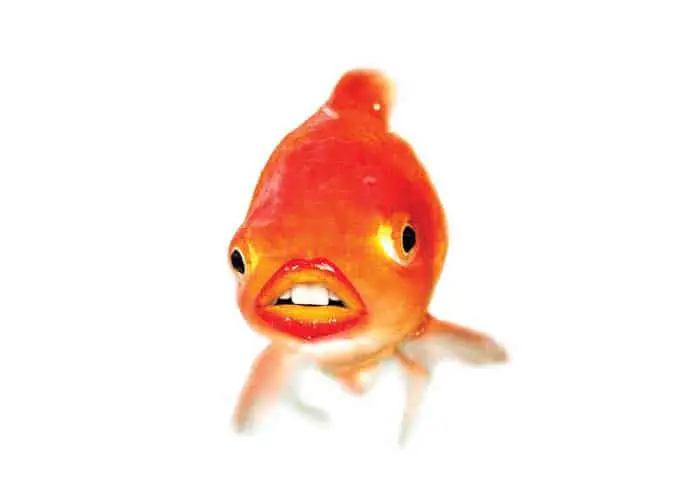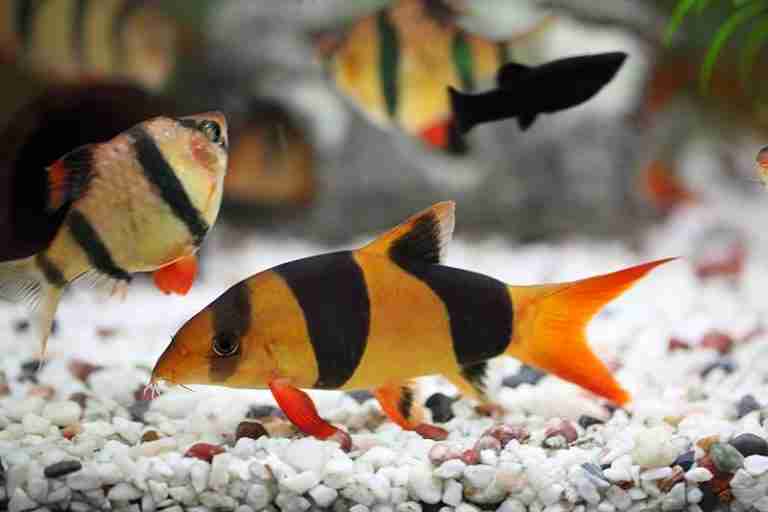What Do Angelfish Eat (Top foods for a healthy diet)
The freshwater angelfish originates in the Amazon rivers of South America, which is rich in live food sources for angelfish to hunt. Unfortunately, the same cannot be said for most aquariums.
It would help if you supplemented the diet of a captive angelfish with food that is high in protein and other nutrients to maintain good health, such as small worms and crustaceans.
While angelfish will eat pretty much anything you give them, and they may be eating well in your aquarium, it doesn’t mean they are getting all of the nutrients they need.
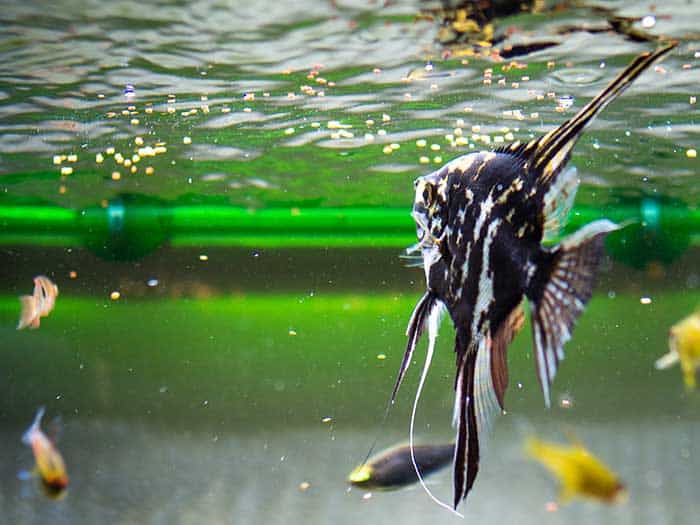
Angelfish are omnivores, requiring a balanced diet to remain healthy and promote good digestion. Angelfish will do best with a high-protein diet that is around 90% protein and 10% plant-based.
The question of “What do angelfish eat?” isn’t quite as simple as it seems. What an angelfish eats in the wild can be quite different from what it will eat in an aquarium.
What Do Angelfish Eat In The Wild
Freshwater angelfish are natural predators, and the Amazon rivers of South America are teeming with life, which provides these topical fish with an abundance of food.
With a healthy diet, angelfish can grow to around 10 inches long and can live for around 10-12 years in captivity. By understanding the natural diet of angelfish, you will know what to feed them in an aquarium environment to sustain a long and healthy life.
Read our article: How Long Do Angelfish Live & How To Improve Life Expectancy for further information.
Angelfish Diet In The Wild
Angelfish eat mostly smaller fish, crustaceans, and insects in the wild. They will also consume some plant matter, but this is not a significant part of their diet.
Below is an example of what angelfish eat in the wild:
- Small crustaceans such as shrimp and crabs.
- Small fish (up to 1 inch long)
- Insects such as ants, water bugs, and spiders
- Plants such as algae, floating plants, and water lilies
What To Feed Angelfish
Aquarium angelfish don’t have access to the same variety of food sources as their wild counterparts. To make up for this, it’s essential to give them as much variety as possible, similar to their natural diet.
Many aquarists will only use commercial flake food because it is convenient and will feed a wide variety of large and small fish. While this is a good start, it’s not the best way to provide all the nutrients your angelfish needs from a varied diet.
Ideally, it would be best to supplement a flake food diet with live food, such as small worms and crustaceans. Live foods are not always easy to come by or keep, so you can also give them freeze-dried or frozen foods that have slightly lower nutritional value but are better than nothing.
Although freeze-dried food has a slightly lower nutritional content, it benefits from being treated and, therefore, is sterile. Some live foods can contain parasites which can be a risk to the health of your fish. The freeze-drying process will kill off any diseases or parasites present.
If you source your live food from a reputable seller or even breed them yourself, the risks are minimal.
Best Food for Angelfish
The best food for angelfish is fresh, live food similar to their natural diet in the wild. Although it is entirely possible to only feed your angelfish with commercial flake foods, granules, and pellet foods, their digestive system is not designed for it.
Fresh, live foods will digest easier, helping your angelfish avoid suffering from bouts of constipation and bloating. In contrast, dry foods (especially pellets) will often cause blockages as they absorb fluid and expand in the gut.
High-quality commercial fish food such as flakes, granules, and pellets are beneficial as they often contain added nutrients to help maintain the overall health of your angelfish. Be aware that too much food can still contribute to blockages in an angelfish’s digestive tract.
Best Live Food For Angelfish
You will need to feed your angelfish with live foods similar to what they eat in the wild for the best overall health. These will provide all the necessary nutrients and ensure a healthy digestive system.
You can purchase many live foods in pet stores and fish stores. There is also an increasingly wide range of live foods available online. So let’s look at what food angelfish eat.
The best live food for angelfish are:
- Mysis Shrimp
- Blood worms
- Brine Shrimp
- Black worms
- Small soft-shelled crabs
- Insect larvae
- Daphnia
Some of the foods listed above are more readily available than others. You don’t need to source each of them. Pick a couple and use them alongside fish flakes, granules, or pellets on alternate days.
All of the above foods are available to buy frozen, which is easier to keep for extended periods.
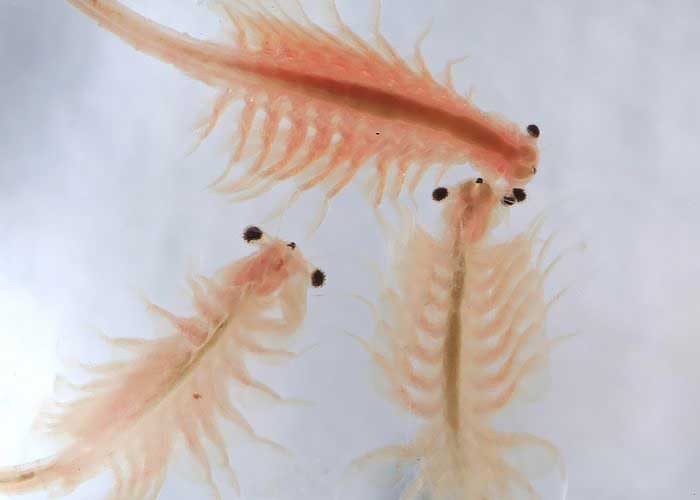
Best Fish Food For Angelfish
When choosing commercial fish food, many good brands are available. I would always advise choosing a quality brand of fish food, so you know that it will have the highest amount of nutrients.
Another consideration when choosing the best fish food for angelfish is the type. All of the live foods listed above can also be sourced as freeze-dried food, which is your first option.
The second option is commercial fish food that has been processed into flake, granule, or pellet form. These foods often contain a mixture of food types, and the highest quality brands have added nutrients necessary for healthy skin, growth, and digestion.
Below is a list of the best freeze-dried food for angelfish, including some recommended links to some good quality brands for the freeze-dried versions.
- Freeze-Dried Brine Shrimp (Find The Best Price)
- Freeze-Dried Krill (Find The Best Price)
- Freeze-Dried Blood Worms (Find The Best Price)
- Freeze-Dried Mysis Shrimp (Find The Best Price)
- Freeze-Dried Tubifex Worms (Find The Best Price)
Again, you do not need to use each of these foods. Instead, pick one or two and use them alongside a good flake, pellet, or granule food. You may want to switch them up every two or three months, but your angelfish may develop a favorite and not eat other foods you try them on.
When picking a good commercial flake, pellet, or granule, there are too many options to list, so I will provide a few links below to some that I would recommend. Most of these foods will suit all fish in your tank, making them very convenient.
Aqueon Tropical Flakes (Find The Best Price At Amazon Or Chewy)
Aqueon Tropical Granules (Find The Best Price At Amazon Or Chewy)
Tetra Min Plus Tropical Flakes (Find The Best Price At Amazon Or Chewy)
What Human Food Can Angelfish Eat
Angelfish will need to eat a small amount of plant-based food for the absolute best digestive health. If you have a planted tank, your angelfish will probably graze on some leaves from time to time, however, you can introduce some human food into the tank, which they will also eat.
Some human food that angelfish can eat are:
- Lettuce
- Blanched Pea
- Zucchini
To prepare the above foods, you can boil until softened and shred them or squash them down so that your angelfish can consume them.
You can try other fruit and vegetables, but I would avoid any fruit that is high in acidity.
Can Angelfish Eat Goldfish Food
Angelfish can eat goldfish food as they are similar in content to traditional fish foods. Many fish foods will be labeled explicitly as betta food, goldfish food, or other popular fish species, although the content is often the same.
Always check the label doesn’t state that it is for goldfish only, but this is unlikely as many tanks will have a variety of fish species, and most commercial foods are made with this in mind.
How To Feed Angelfish
Once you have found the right food for your angelfish, you will need to know the best way to feed them. Understanding how to feed angelfish correctly is relatively straightforward, even if you have other fish in your tank.
You can add live food directly to the tank. Your angelfish are great hunters and will enjoy hunting for their food.
If you have frozen fish food such as frozen brine shrimp, you may need to pop it in some water at room temperature so that it can be separated more easily.
Frozen food will naturally defrost in the warm tank water, so once you have the correct portion size, you can either add it directly to your angelfish tank or defrost until you have a squidgy block.
Frozen bloodworms tend to fall apart much quicker and become messy, so I usually add them straight into my tank.
Most frozen foods will be portioned into small blocks, so a little bit of defrosting will allow you to separate them. I find that 1 block is adequate for 2-3 angelfish.
The rest of this section will answer the questions, “How often should you feed angelfish?” and “How much to feed angelfish?”.
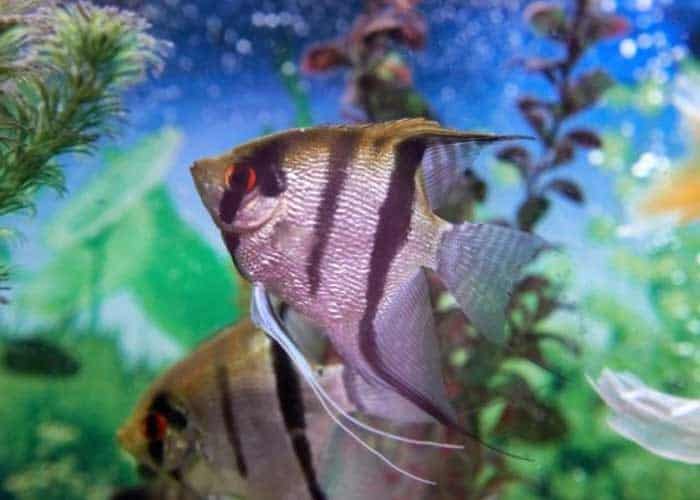
How Often To Feed Angelfish
Angelfish can have big appetites, so you must ensure they are not overfed.
Young angelfish (under 1 year old) require 1-2 feeds per day and 3 at most. If you choose to give multiple meals, you will need to be strict on how much food you give them.
These greedy freshwater fish will eat whatever is available and risk getting fat if overfed, harming their health.
Do You Feed Angelfish Everyday
I am a believer in fasting fish. Fasting is where you will feed your angelfish fish for 5 or 6 days of the week and not feed them at all on the other days.
I usually fast my fish for two days (Saturday and Sunday), but you may only want to fast them for one day a week or split the days you fast them.
There is no right or wrong way to introduce fasting, and it’s just a way to give your angelfish a break from eating and allow their digestive system to rest. During fasting, your angelfish will search out food waste in their tank and nibble on any live plants.
How Much To Feed Angelfish
Knowing how much to feed angelfish is essential to avoid overfeeding and excess food waste building up in the tank. Rotting food waste will produce toxic ammonia that you must remove with regular cleaning.
The best way to avoid overfeeding is to give your angelfish as much food as they can consume within 30 seconds.
If you have many fish in the tank, make sure to provide enough food for all fish at each tank depth and be aware of how much food remains uneaten within 30 seconds to 1 minute.
How To Feed Baby Angelfish
If you keep male and female angelfish in the same tank, at some point, you will likely need to know how to feed baby angelfish.
Feeding angelfish fry is a different ball game compared to feeding adults. Angelfish fry requires feeding 3-4 times per day as they will be eating tiny amounts and growing very quickly, especially in the first few weeks.
When angelfish hatch, they will resemble tiny tadpoles and won’t start to shape until around 3-4 weeks. As angelfish fry hatch, they remain attached to the spawning site for 2-3 days, feeding off the yolk sacks. The egg yolks are rich in protein and will enable speedy growth.
After a few days, the egg yolks will begin to disappear. The angelfish fry will become free swimming, and you will need to provide a good food source for them to survive.
Commercial flake food is not suitable for angelfish babies, as their mouths are too small, their digestive system is underdeveloped, and they will require food rich in protein to keep up with their growth needs.
What To Feed Angelfish Fry
Below I have compiled a list of the best food for angelfish fry:
- Live Baby brine shrimp
- Infusoria (Live microorganisms)
- Live Vinegar eels
- Live Micro worms
- Lightly boiled egg yolk
Small fresh, meaty foods such as newly hatched baby brine shrimp and tiny worms will make a good fish meal, providing the highest nutritional value and will help with speedy growth.
As your angelfish fry grows, you can crush some flake food on alternate feeds; otherwise, they may become dependent on live food and reject any substitutes later on.
How Long Can Angelfish Go Without Food
Full-grown angelfish can survive around one week without food, but this doesn’t mean they should. Angelfish are pretty resourceful, so they will find food hiding in the substrate and can also feed on live plants.
Adult angelfish will also have a good reserve of fat stores to burn, which they would use in the wild when food is not always so abundant.
Young angelfish can only survive around 3-4 days without food before becoming ill or dying. This may not seem long, but it is comparable to human babies that wouldn’t survive long without food, whereas adults can survive for more than a month with only water.
Do Angelfish Eat Other Fish
Angelfish are carnivores, so they will eat other fish if they are small enough to fit in their mouths. Keeping angelfish with smaller fish is not recommended, as they may become snacks. Smaller fish are usually safer in groups of 10-15.
It would be best not to keep angelfish with fry or small shrimp, but there are plenty of fish they can live peacefully with.
The article Are Angelfish Aggressive covers which fish can live with angelfish and how to stop any aggressive behavior toward other fish.
Wrap Up
Hopefully, this article has given you enough insight into the angelfish diet. The main things to take away are that an angelfish requires a high-protein diet of live foods.
Brine shrimp are a favorite food and are relatively cheap and easy to come by in most fish stores or can be purchased online in a freeze-dried form.
Variety is also beneficial, and you will need to consider adding a small amount of plant-based food either in the form of softened salad and vegetable items or by providing access to leafy live plants.
Don’t overfeed your angelfish, and consider not feeding them for a day or two each week to help your angelfish digestive system to recover.
In between using live fish food, good quality commercial fish food such as flake foods, granules, and pellets can be used, which will benefit other fish in the tank.


